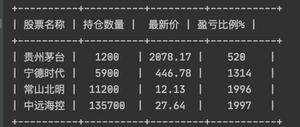【Python知识】 list初始化

1、基本方法。
lst = [1, 2, 3, 4, 5]2、初始化连续数字。
>>> lst = [n for n in range(5, 10)]>>> print(lst)
[5, 6, 7, 8, 9]
3、初始化n个相同值。(两种方式)
>>> lst = [\'x\' for n in range(5)]>>> print(lst)
[\'x\', \'x\', \'x\', \'x\', \'x\']
>>> lst = [\'z\']*5
>>> print(lst)
[\'z\', \'z\', \'z\', \'z\', \'z\']
>>> lst = [0]*3
>>> print(lst)
[0, 0, 0]
4、Python的四种数据类型字典、集合、列表、元组,分别用花括号、中括号、小括号表示。如:
字典:dic={\'a\':12, \'b\':34}集合:s = {1, 2, 3, 4}
列表:li=[1, 2, 3, 3]
元组:tup=(1, 2, 3, 4) #元组是不可更改的列表
5、有序字典( collections.OrderedDict)
from collections import OrderedDict>>> OrderedDict([(\'b\', 2), (\'a\', 1)])
Python 3.6 中 dict 的实现了 PEP 468,使得默认字典也能保持有序,但保存顺序的功能被认为不可以过于依赖,未来也许会改变。
以上是 【Python知识】 list初始化 的全部内容, 来源链接: utcz.com/z/387358.html



